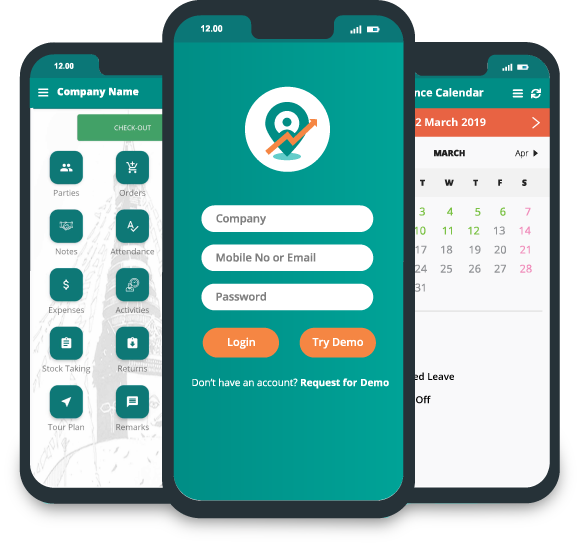How Beat Planning Helps Sales Teams Stay Agile ?

Sales teams thrive on agility - the ability to quickly adapt and respond to new challenges, opportunities, and changes in the market. But staying agile can be tough when you're bogged down by outdated planning processes that don't allow for flexibility or creativity. That's where beat planning comes in: a dynamic approach to sales strategy that empowers teams to stay nimble, efficient, and focused on what really matters - closing deals and driving revenue. In this blog post, we'll explore how beat planning works, why it's so effective for sales teams of all sizes and industries, and some tips for getting started with this powerful technique today!
Introduction to Beat Planning
Sales teams are always looking for new ways to increase their agility and stay ahead of the competition. One way to do this is through beat planning. Beat planning is a process that sales teams use to map out their activities and strategies for each week or month. This helps them stay organized and focused on their goals. It also allows them to see where they need to make adjustments in order to keep up with changing market conditions.
The first step in beat planning is setting your overall goal for the period of time you’re planning for. This could be something like increasing your sales by 10% or acquiring new customers. Once you have your goal, you can start mapping out your strategy. Your strategy will involve creating a schedule of activities that you will complete each day or week in order to reach your goal. This could include things like prospecting for new leads, following up with current customers, conducting market research, attending networking events, etc.
Once you have your schedule mapped out, you can start adding in specific tasks that need to be completed in order to complete each activity. For example, if one of your activities is “prospecting for new leads”, your task list might include things like “research target companies”, “identify decision makers”, “reach out to leads”, etc.
As you can see, beat planning is a great way for sales teams to stay organized and focused.
Benefits of Beat Planning for Sales Teams
Sales teams that are able to effectively plan their beats and territories are able to stay agile and responsive to changes in the market. By having a clear understanding of their customers, sales teams can more easily identify opportunities and tailor their approach accordingly. Additionally, beat planning helps sales teams to avoid overlap in coverage and ensure that each salesperson is making the most efficient use of their time.
Beat planning also allows sales teams to track progress and performance over time. This data can be used to improve future planning efforts and make necessary adjustments to keep the team on track. By regularly reviewing and updating their beat plans, sales teams can stay ahead of the competition and continue to drive results.
How Beat Planning Helps Sales Teams Stay Agile?
Sales teams are always looking for new and better ways to stay ahead of the competition. They need to be able to adapt to changes in the market quickly, and beat planning helps them do just that. Beat planning is a tool that sales teams can use to map out their territory. It helps them identify where their customers are, what their needs are, and how best to reach them. This information is critical for sales teams who need to be able to adjust their strategies on the fly.
With beat planning, sales teams can see where their competition is strong and where they are weak. They can also find new opportunities that they may have otherwise missed. All of this information is essential for sales teams who want to stay one step ahead of the competition.
Best Practices for Implementing a Beat Plan
If you're like most sales teams, you're always looking for ways to improve your process and close more deals. Beat planning is a great way to do just that. Here are some best practices for implementing a beat plan:
1. Define your territories.
The first step in creating a beat plan is to define your territories. This will help you determine which accounts are assigned to which sales reps.
2. Identify your target customers.
Once you've defined your territories, the next step is to identify your target customers. This will help you focus your efforts on the accounts that are most likely to convert.
3. Create a cadence of activities.
The third step is to create a cadence of activities. This means setting a schedule for when you'll reach out to each account and what type of outreach you'll do (e.g., email, phone call, etc.).
4. Track your progress and adjust as needed.
Strategies for Making Sure Your Team Adopts the Beat Plan
If you're looking to get your sales team on board with beat planning, here are a few strategies that can help:
1. Make sure everyone understands the benefits of beat planning.
The first step is to make sure that everyone on your team understands the benefits of beat planning. Explain how it can help them be more efficient and effective in their jobs.
2. Get buy-in from team leaders.
It's important to get buy-in from team leaders before implementing a beat plan. They need to be on board with the idea and be willing to support it. Once they're on board, they can help sell the concept to the rest of the team.
3. Train your team on how to use the beat plan.
Once you have buy-in from team leaders, it's time to train your team on how to use the beat plan. This will ensure that everyone knows how to use it and can start putting it into action immediately.
Challenges of Beat Planning and How to Overcome Them
Sales teams are under constant pressure to hit their numbers, and they need to be able to adapt quickly to changes in the market. This can make it difficult to plan for the future and stay ahead of the competition.
The biggest challenge with beat planning is that it can be difficult to know what will happen in the future. The sales cycle is always changing, and new challenges can pop up at any time. This means that your plans need to be flexible and ready to change at a moment's notice.
Another challenge is that you need to have buy-in from all members of the team. If everyone isn't on board with the plan, it will be difficult to execute it effectively. You need to make sure that everyone understands the goals and objectives, and that they are bought into the plan.
You need to be able to track progress and measure results. Without this data, it will be difficult to tell if your plans are working or if they need to be tweaked. Make sure you have a system in place to track progress and measure results so you can constantly improve your beat planning process.
Conclusion
Beat planning is an invaluable tool for sales teams. It helps them stay agile and able to respond quickly to changes in the market or customer needs. It also allows managers to get a better picture of their team's performance so that they can make adjustments and improvements where necessary. With beat planning, you can ensure that your sales team is well-equipped with the right tools and strategies needed to meet their goals and serve customers more efficiently.









